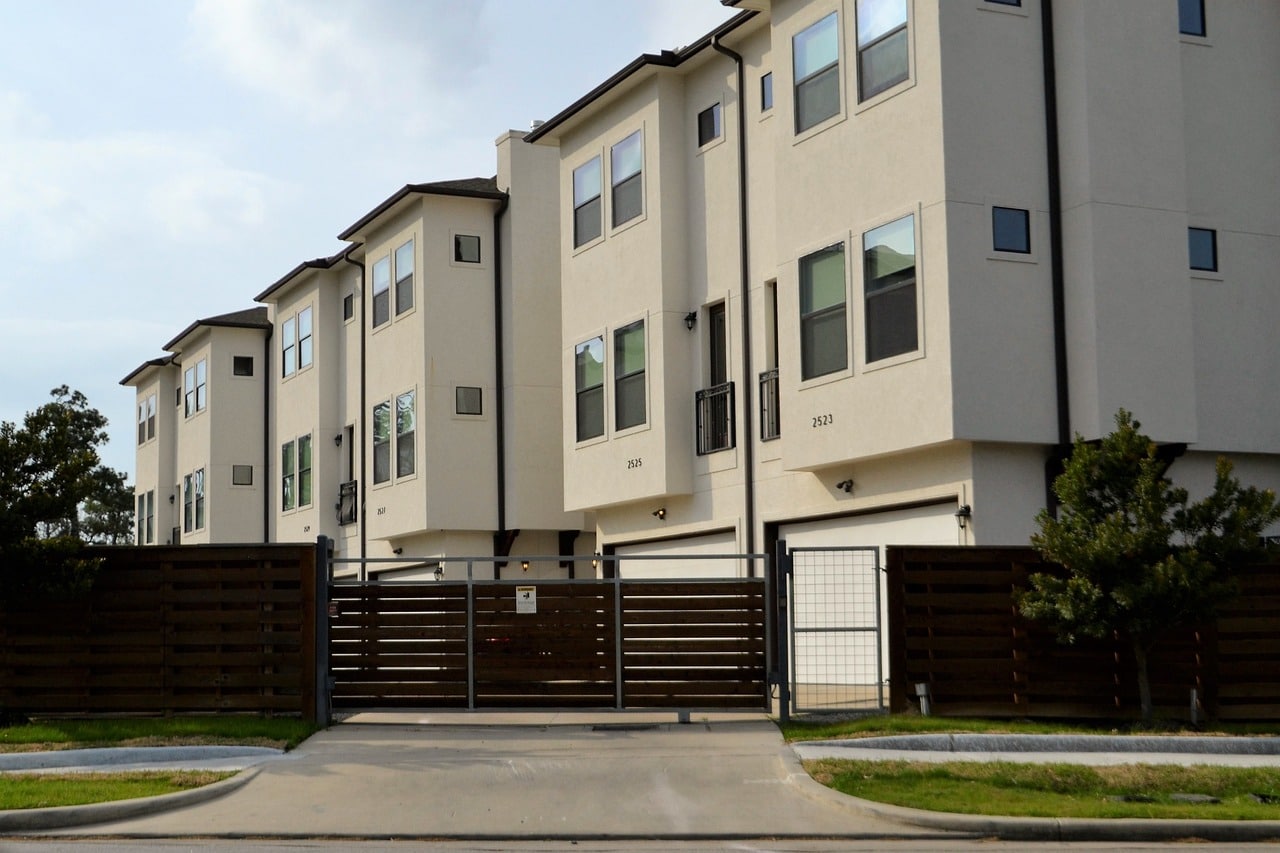In the heart of our urban landscapes, the need for affordable housing, inclusivity, and sustainability is more urgent than ever. The convergence of these elements is not accidental but is a deliberate outcome of comprehensive and strategic urban planning. As cities continue to evolve and expand, the role of urban planning in creating inclusive, affordable, and sustainable spaces for communities is becoming more critical. This article will explore how sustainable urban planning fosters affordable housing and inclusivity in our cities.
The role of sustainable urban planning in affordable housing
Sustainable urban planning is not just about developing aesthetically pleasing cityscapes. It is about creating communities that are economically viable, environmentally friendly, and socially responsible. A key aspect of this planning is ensuring access to affordable housing.
Cela peut vous intéresser : How can AI-driven language translation improve communication in multicultural societies?
An affordable housing crisis is looming in many urban areas across the globe. Rapid urbanization and escalating housing costs are making it increasingly difficult for low and middle-income residents to find affordable places to live. But, sustainable urban planning can be an effective tool to address this issue.
Through strategic zoning regulations, city planners can allocate specific areas for affordable housing. This not only ensures that affordable housing units are available but also promotes residential diversity. It allows residents from different socio-economic backgrounds to live in the same neighbourhood, promoting social inclusivity.
Sujet a lire : What impact does green energy have on reducing greenhouse gas emissions in industries?
Moreover, sustainable urban planning can also promote affordable housing through energy-efficient designs. Buildings that incorporate energy-efficient measures such as solar panels, efficient heating and cooling systems, and proper insulation can significantly reduce energy costs. These savings can be passed on to the residents, making housing more affordable in the long run.
Sustainable urban planning and social inclusivity
Sustainability and social inclusivity are interlinked aspects of urban development. An inclusive city is one where all residents, regardless of their social, economic, or cultural background, have equal access to city services and opportunities.
Inclusivity in the urban context is about more than just affordable housing. It also involves the creation of public spaces that can be accessed and enjoyed by all residents. Sustainable urban planning can foster social inclusivity by designing cities that are pedestrian-friendly, have ample public green spaces, and are well connected with public transport.
For instance, planning pedestrian-friendly cities reduces the dependence on private cars, making travel affordable for all residents. Similarly, creating public green spaces not only enhances the city’s environmental sustainability, but it also provides spaces for residents to interact and engage with their communities, fostering social inclusivity.
Moreover, sustainable urban planning can create inclusive cities by integrating different land uses. Mixing residential, commercial, and cultural uses in close proximity can eliminate socio-economic segregation and encourage interaction among diverse groups.
Environmental sustainability and urban development
As cities continue to expand, so does their environmental footprint. However, sustainable urban planning can help mitigate the environmental impact of urban development.
For instance, implementing green building standards can significantly reduce a city’s energy consumption and carbon emissions. Incorporating green spaces in city design not only enhances the city’s aesthetic appeal but also improves air quality, reduces urban heat islands, and provides habitat for local flora and fauna.
In addition, sustainable urban planning considers the long-term implications of development. It promotes dense, compact urban forms that minimize land use and encourage walking, cycling, and public transit use, thereby reducing greenhouse gas emissions.
The power of communities in sustainable urban planning
The success of sustainable urban planning lies not only in the hands of city planners but also in the active participation of the community. Engaging communities in the planning process fosters a sense of ownership among residents and ensures that the city’s development meets their needs and aspirations.
Public participation can help identify the specific needs of different demographic groups, such as the elderly, children, and people with disabilities, and ensure that these needs are addressed in the city’s development.
Furthermore, active community involvement in planning can also foster social inclusivity. It can create a sense of belonging among residents, cultivate community pride, and strengthen social cohesion.
Towards a sustainable and inclusive future
While the challenges of urban development are immense, the promise of sustainable urban planning is equally great. By fostering affordable housing, promoting social inclusivity, mitigating environmental impacts, and encouraging community participation, sustainable urban planning has the potential to transform our cities into inclusive, affordable, and sustainable spaces for all residents.
To realize this vision, it is essential to embrace a holistic view of urban planning. We must understand that our cities are not just physical spaces, but living, breathing entities that evolve with the aspirations and needs of their residents. With this understanding, we can leverage sustainable urban planning to shape the future of our cities, ensuring that they are not only spaces for people to live, but also places where people thrive.
Climate Change, Renewable Energy, and Urban Planning
The urgency to address climate change has brought renewable energy to the forefront of urban planning. Cities are not only major contributors to global warming but also the most vulnerable to its impacts. Sustainable urban planning, therefore, has a key role to play in mitigating climate change and creating resilient urban environments.
Through the promotion of renewable energy, sustainable urban planning can significantly reduce the greenhouse gas emissions of cities. For instance, by encouraging the use of solar panels on rooftops, cities can transition from fossil fuels to clean energy sources.
Renewable energy not only reduces a city’s carbon footprint but also significantly cuts energy costs. This reduction in energy costs can be passed on to residents, thereby making housing more affordable.
Furthermore, renewable energy projects can also provide a platform for community engagement. Residents can be involved in the planning and execution of these projects, fostering a sense of ownership and promoting social equity.
In addition to renewable energy, sustainable urban planning also involves the creation of green infrastructure. This includes elements such as green roofs and walls, urban forests, and rain gardens. Not only do these features improve the quality of life of residents, but they also provide essential ecosystem services such as air purification, temperature regulation, and stormwater management.
Public Transportation and Sustainable Cities
Public transportation is a key element of sustainable urban planning. A well-designed public transportation system can minimize the reliance on private vehicles, significantly reducing a city’s carbon emissions and improving air quality.
Moreover, public transportation also promotes affordable housing and social inclusivity. By providing affordable mobility, public transportation allows residents from all socio-economic backgrounds to access employment opportunities and city services. This ensures that all residents can participate in the city’s economic and social life, fostering social equity.
Sustainable urban planning also involves designing cities that are pedestrian and cyclist-friendly. By creating safe and accessible walking and cycling paths, cities can promote active transportation modes, enhancing the health and wellbeing of residents while also reducing carbon emissions.
Furthermore, public transportation can also serve as a platform for community engagement. Through public consultations and participatory planning processes, residents can contribute to the planning and design of public transportation services, ensuring that they meet their needs and aspirations.
Conclusion and Key Takeaways
In conclusion, sustainable urban planning has a key role to play in promoting affordable housing, social inclusivity, and environmental sustainability in our urban areas. Through strategic zoning regulations, energy-efficient designs, renewable energy, green infrastructure, and public transportation, cities can cater to the needs of their diverse residents while also mitigating their environmental impact.
However, the success of sustainable urban planning rests on the active participation of the community. Community engagement is therefore critical in shaping the future of our cities. Through their involvement in planning processes, residents can ensure that city development aligns with their needs and aspirations, fostering social cohesion and a sense of belonging.
As we face the challenges of rapid urbanization and climate change, sustainable urban planning offers a path towards creating sustainable cities that are not just spaces for people to live, but also places where people thrive. By embracing this vision, we can ensure a sustainable and inclusive future for all residents.






